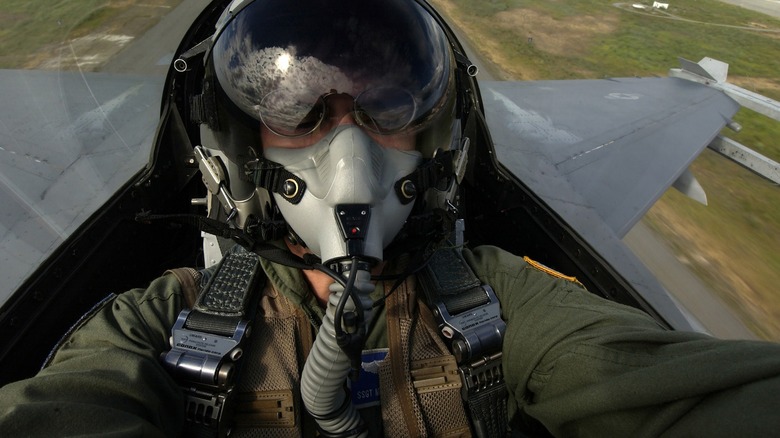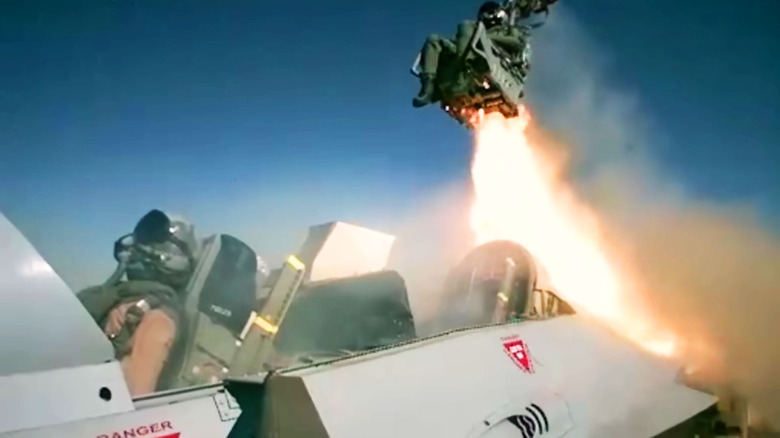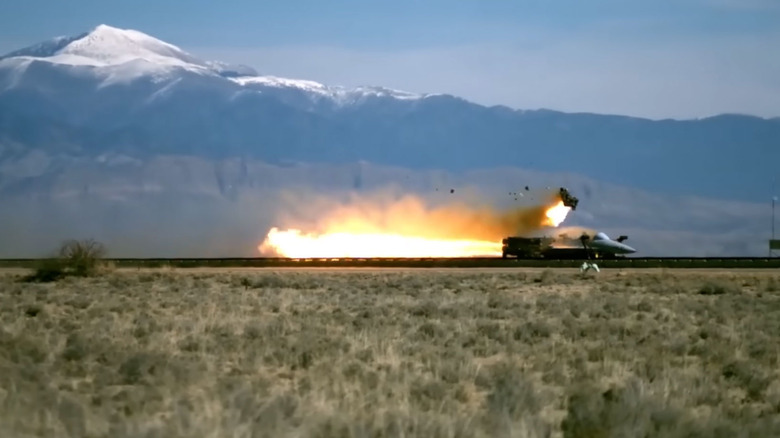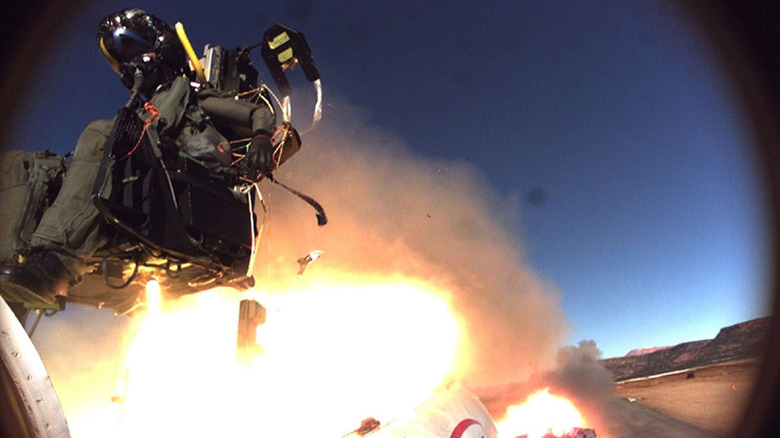Here's How Military Jet Ejection Seats Really Work
Though movies and television would make it seem like cockpit ejections are common, they are rare and probably involve much more than you originally thought. Military jet ejections typically only happen when there is a major failure on a jet, as the actual ejection itself can prove quite dangerous. When a pilot ejects from a plane, their entire seat is launched with the help of an explosive cartridge under the seat, along with sophisticated sensors on the seat itself, which dictate when the parachute deploys. The entire jet ejection process happens within four seconds and requires a series of steps to go right to send the pilot to safety.
Practically speaking, when there is a significant malfunction onboard a military plane, the pilot or co-pilot will repeat "eject" or "bailout" to indicate the need to eject. A handle or lever is normally pulled, which initiates the ejection process and launches the explosive cartridge under the pilot's seat, blasting them out of the plane while simultaneously shedding the jet's canopy overhead.
Once free and away from the plane, the seat falls away, and a parachute is deployed so that the pilot can float down to safety. While this all sounds familiar and in line with popular action movies, the mechanical and technical process and steps required to initiate a perfect jet ejection require multiple pieces of sophisticated equipment operating in unison to ensure the pilot's safety.
The science behind military jet ejection seats
The seat ejection process comprises several components: a seat catapult, restraints, an explosive cartridge, pitot tubes, and an onboard central processing unit. Some of these components are highly sensitive and must be, as the typical ejection process requires precise timing to avoid injuring or killing the ejected pilot.
When a pilot pulls on the ejection lever, an electrical signal causes the hatch or canopy overhead to unlock or jettison completely from the plane. One-tenth of a second from pulling the ejection handle or lever, the seat catapult initiates, forcing the seat up the rails while an explosive charge fires under the seat, ejecting the pilot. Once fully ejected and cleared from the vicinity of the plane, an onboard rocket motor and stability system adjusts the seat's pitch so the pilot doesn't spin out of control on their descent.
Pitot tubes or seat sequencers on the seat measure airspeed and altitude while the processing unit calculates which mode to initiate depending on the measurements. These are required as there is not much oxygen at 50,000 feet in elevation, and the seat itself must provide additional oxygen and free fall longer to get to lower altitudes. Once the pilot reaches 15,000 feet, a parachute deploys, delivering the pilot to safety.
There are major risks with ejecting from a jet
Ejecting from a jet puts immense strain on the spine and body, with a range of anywhere from five to 20 Gs of additional force. According to a study published in the National Library of Medicine that looked at members of the Israeli Air Force between 1990-2019, the rate of major injury associated with airplane ejections was 29.8%, with a mortality rate of 10.5%. Fatality rates increase depending on how fast the jet is traveling, with speeds of 500 knots or more at the time of ejection posing an extremely dangerous threat.
The most common injuries included spinal fractures, extremity, and head trauma. According to a Smithsonian interview, some airmen even reported losing height due to all the pressure put on their spine. As one can imagine, launching from the cockpit of a jet at such a high rate of speed without properly secured seat restraints could cause severe extremity damage, not to mention the physical strain that additional G forces put on the body. Luckily, more modern innovations aim to improve the safety of jet plane ejections.
Technology is making jet ejection safer
More modern ejection seats, like the ACES 5, developed by Collins Aerospace, are innovating on existing technology to keep pilots safer. A successor to the ACES II system, which was installed in various planes, including the retired F-15, F-16, and B-1. The ACES 5 uses new safety technology to reduce instances of major injury and death. These systems include enhanced head and neck protection, leg flail prevention, and a load-compensating catapult that varies thrust based on the pilot's weight.
According to Collins Aerospace's VP of Integration Solutions within Mission Systems, John Sapp, "Our next-gen seat reduces overall ejection-related major injuries to less than 5 percent and ejection-related spinal injuries to less than 1 percent."
Though the very nature of ejecting from a pilot's seat at extremely high velocities will likely be dangerous regardless of technological innovation, it's reassuring to know that pilot ejection systems seem to be improving with the development of new technology.



